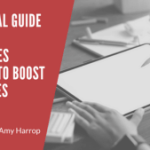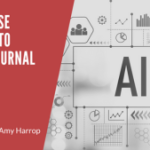 Is it better to self-publish in a digital or print format?
Is it better to self-publish in a digital or print format?
That’s a question that looms large for many self-published authors. With more than one million books self-published in 2017, there’s no one easy answer that applies to every situation.
In some cases, the book may make the decision for you. For example, while there are coloring apps available for digital reading devices, most coloring books are published in print.
If you have a choice, it’s important to know how each option will affect you as the book’s author. Print, digital, or both – here’s the information you need to get started.
The Pros and Cons of Print Publishing
Print publishing is the most traditional publishing option and there are some significant advantages to self-publishing in print – as well as a few drawbacks. Let’s start with the pros.
- Print publishing allows you to have physical copies of your books to sell. That means you can walk them into local bookstores and take copies of them with you to events.
- It’s often very easy to convince people to buy a hard copy of a book, especially when it’s right in front of them. They’re unlikely to forget about it the way they might forget about a link to your website or an Amazon listing.
- Print publishing is ideally suited to some low-content books, such as coloring books and planners. If you plan to publish books that are meant to be written in, print publishing is often the only real option.
- You’ll have more diverse and flexible design options with print publishing. Most printers have a wide array of fonts, layouts, and design variations to choose from.
- Selling printed copies of your book will keep your name and brand in front of the people in your target audience.
- There’s nothing like the experience of holding a copy of a book that you wrote in your hands. That’s a feeling that simply can’t be duplicated with digital publishing.
I’m a big fan of print publishing because it allows me to be creative with the design and layout of my books. But, there are a few downsides to consider as well. For example:
- Publishing in print is more expensive than publishing digitally. You’ll be charged based on the number of copies you order – unless you use a print on demand service, which is usually less expensive than bulk print publishing.
- There’s a much longer lead time on print publishing than there is for digital publishing. It may take some time to get printed copies of your book and that means that you’ll need to wait to sell them. (Of course, you can pre-sell your book as well to build anticipation for its release!)
- Editing a printed book requires reprinting it as well. Here again, print on demand is an exception. But, in general, if you find a mistake or want to update information after the fact, you’ll need to pay for more copies of your book.
- Depending on how and where you plan to sell your book, you may need to take on the responsibility of shipping orders to your readers.
It’s a balancing act. For some self-published authors, printed books are the only real option.
The Pros and Cons of Digital Publishing
Now, let’s talk about digital publishing. I think in some cases it’s the perfect choice – and it can be terrific for some kinds of self-published books. Here are the pros as I see them:
- Digital publishing is typically much less expensive than print publishing. That’s because you’ll do most of the work of preparing and formatting your book before you submit it to the publisher. You won’t need to pay for paper and ink, either.
- With digital publishing, everything is on demand. Your up-front costs are limited because there’s no overhead. You’ll pay fees based on the number of books you sell.
- Digital publishing is very fast. There’s only a small lag time when you publish a book digitally. It may take a few days to get your book listing ready, but you can go from typing “The End” to selling your book very quickly.
- People can get a digitally published book instantaneously. In some cases, you may get your royalties more quickly as a result.
Digital publishing does have a few potential downsides:
- You’ll have less control over the appearance of your book than you would with print publishing. Your font and design choices will likely be limited to a few options.
- eBooks may not be as easy to sell as printed books. You can’t bring them with you to events or sell them at local stores. They’ll only be available online.
- It’s difficult to schedule book readings and author gigs with a digital-only book. Bookstores want people to come in the door and buy books. You’ll have to do some innovating to convince a bookstore owner to let you come in and read from your digital book.
- Digital publishing is simply not suited to some low-content books, such as planners, journals, and coloring books.
It’s important to weigh the pros and cons of digital publishing before you decide if it’s right for your self-published book.
Why Not Both?
Do you need to choose between print and digital publishing? In some cases, the answer is a definitive NO. There are advantages to doing both and giving your readers the option of choosing.
One category of self-publishing where I think the choice is wide open is in educational publishing. Workbook pages and flashcards can be sold as POD products or as pre-printed products. Some of your customers may prefer to print items themselves or read them on an E-reader. Others may want a hard copy of your pages shipped to them.
Instead of ruling either option out, it may be beneficial to consider each book you self-publish on its own merits. With some, it may be obvious which option is best. And at other times, you may decide to do both a print and digital publication – and leave the choice up to your readers!



